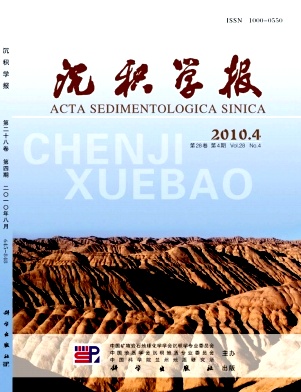Clay Mineralogy and Its Geological Significance of Sediments in the Foreland Basin of West Kunlun Mountains
- Received Date: 1900-01-01
- Rev Recd Date: 1900-01-01
- Publish Date: 2010-08-10
-
Key words:
- West Kunlun mountains
Abstract: To reconstruct the evolution process of tectonics and paleoenvironment during the lateCenozoic time in West Kunlun area, clay mineralogy of the molasse sediments of the foreland basin of West Kunlun mountains were investigated using Xray diffraction (XRD) and scanning electron microscopy (SEM) methods. The results show that clay minerals in sediments of 81.8Ma B.P. are mainly illite and smectite, with minor chlorite and kaolinite, while their relative contents and illite crystallinity change apparently along the profile. Illite content and its crystallinity are both notably high, and the content of smectite is low, with minor kaolinite occurring throughout the sediments of 8~3.5 Ma B.P. The content of smectite increases sharply while the content of illite, as well as the illite crystallinity, decreases, and no kaolinite is present in the period of 3.5~3.3Ma B.P. Clay mineral indices of the period of 3.3~2.8 Ma B.P. are similar to those of 8~3.5 Ma B.P., and which of the period of 2.8~1.8 Ma B.P. are similar to those of 3.5~3.3 Ma B.P. It is concluded that changes in clay mineralogy of the Yecheng sediments was dominantly controlled by the changes of source rocks and, to some extent, by changes in climate around the area. The uplift of the West Kunlun is uneven and stepwise according to clay mineralogy of sediments.
There were three times structural uplift events in the west Kunlun area, which had occurred around 3.5 Ma B.P., 3.3 Ma B.P. and 2.8 Ma B.P., respectively.
In addition, an arid episode occurred around 2.5 Ma B.P. in the region.
| Citation: | XU Yaoming. Clay Mineralogy and Its Geological Significance of Sediments in the Foreland Basin of West Kunlun Mountains[J]. Acta Sedimentologica Sinica, 2010, 28(4): 659-670. |






 DownLoad:
DownLoad: